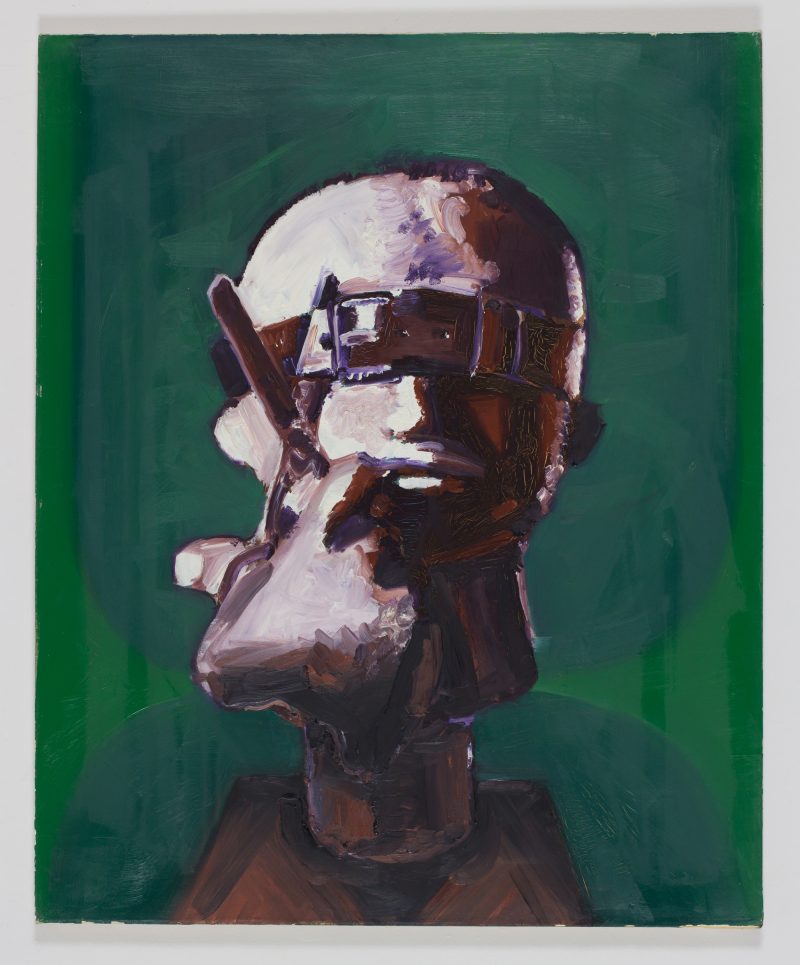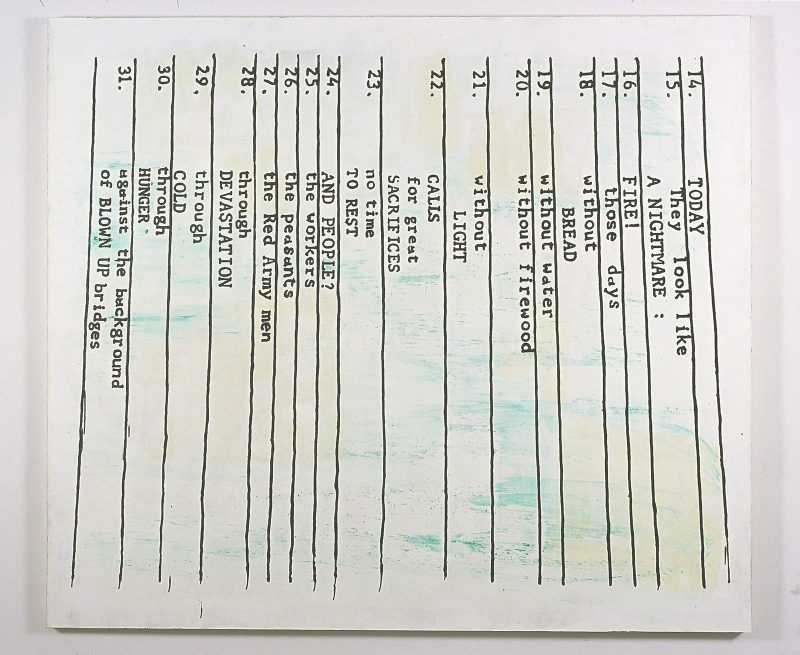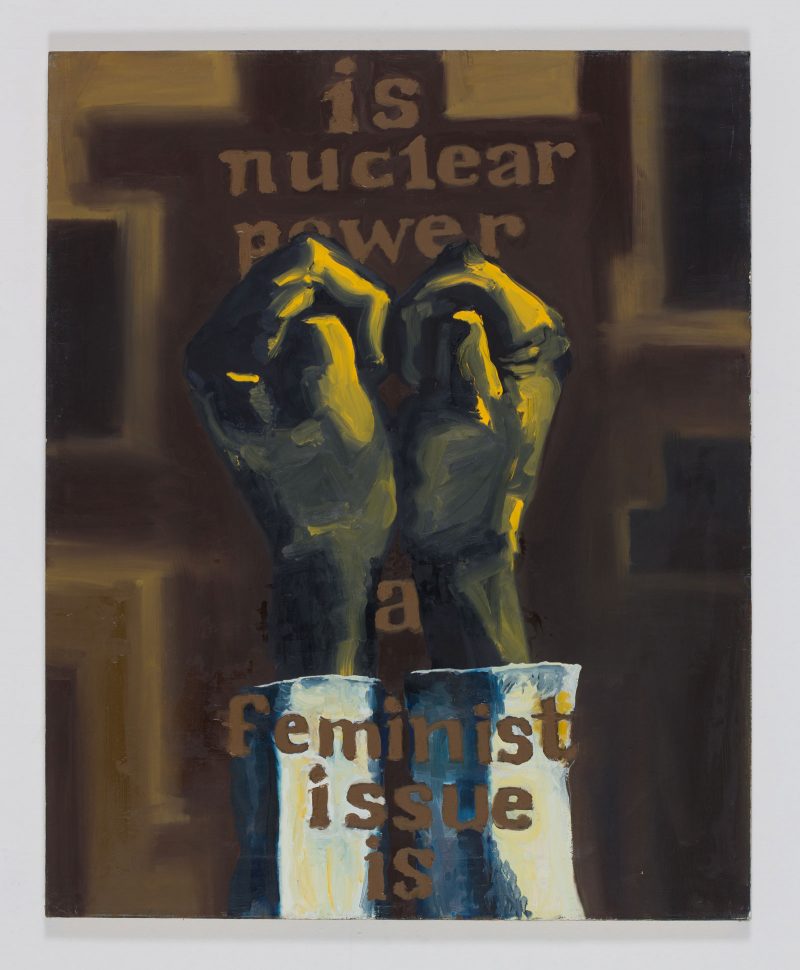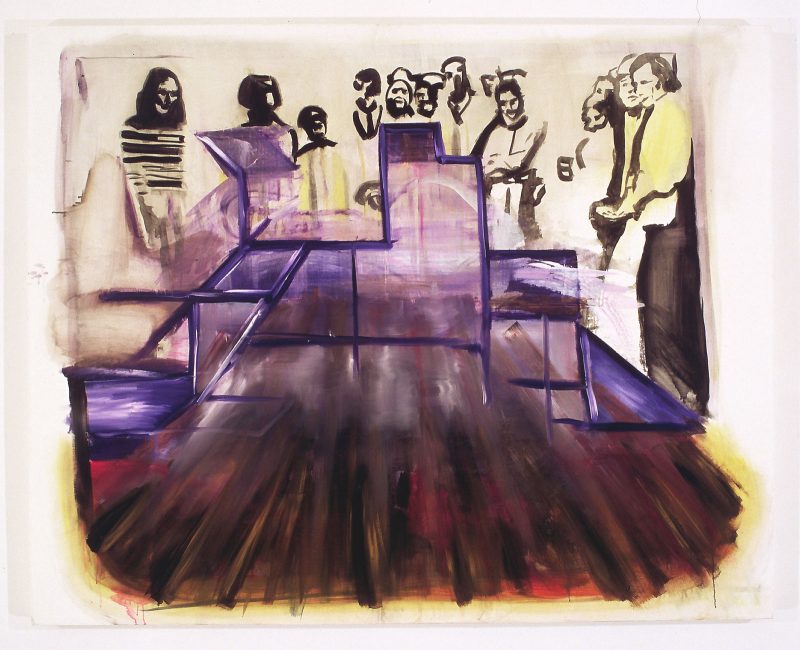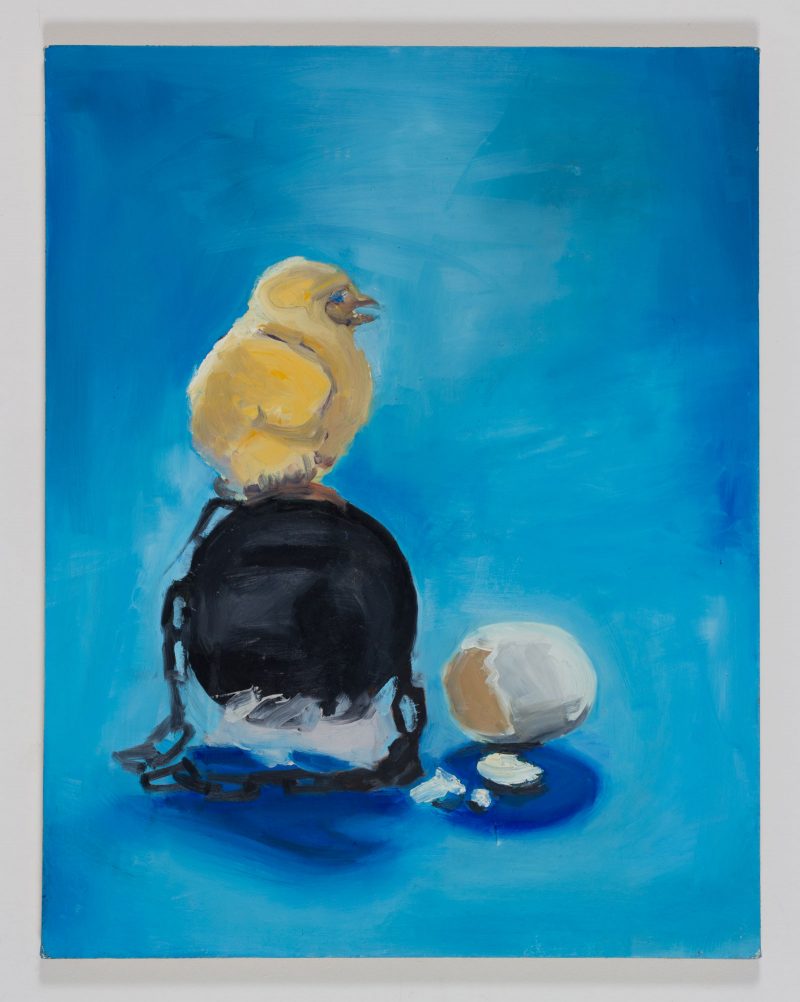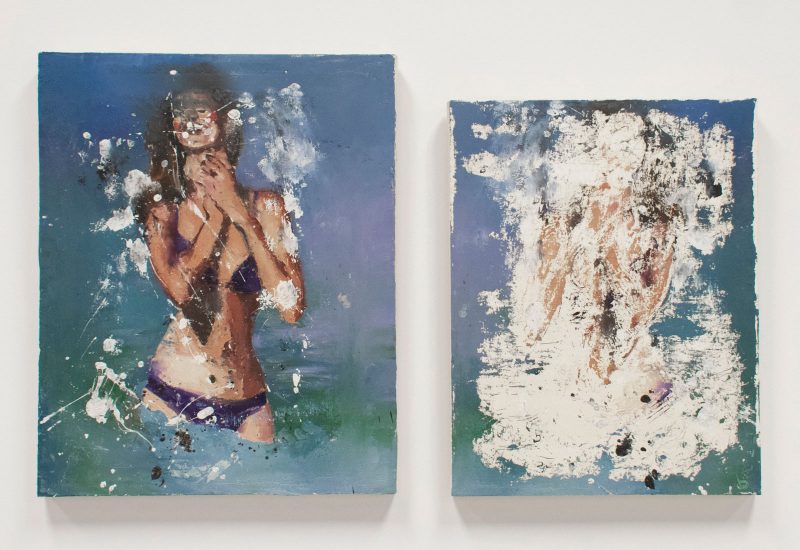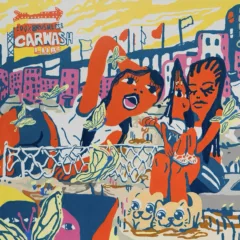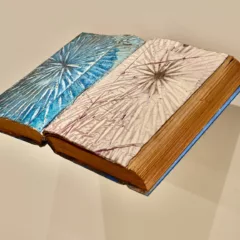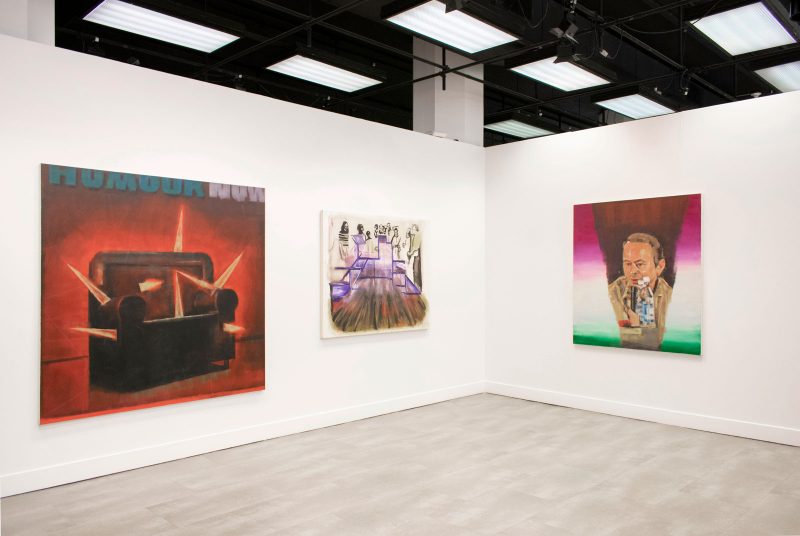
The painting problem
In her career as an arts activist and Working Artists and the Greater Economy (W.A.G.E.) organizer, artist Lise Soskolne is best known for her advocacy work to facilitate fair and sustainable guidelines for the payment of artists working with nonprofits. Though she is an active participant in New York’s art scene as a voice against the exploitation of artists’ labor by the institutions that work with them, Soskolne hasn’t prioritized putting her own artwork in the spotlight. Her aversion to self-promotion and the oppressively capitalist lifestyle tacitly required of an exhibiting artist means that she prefers facilitating other artists’ work over displaying her own. Thus, the role of the artist who does not want to be visible in the capitalist art world frames the premise of her first solo show in NYC since 2001.
The Work, her two-part show at Baruch College’s Sidney Mishkin Gallery, chronicles what Soskolne refers to in the accompanying text as her “painting problem”. Beginning her career in an art world that contemporaneously held the belief that representational painting is “dead” in the face of conceptual works, Soskolne describes her attempts to reconcile her socially engaged career with the satisfaction she finds in the “anachronistic” act of painting and her own unpaid and unseen work in the studio.
Part one of The Work is an assemblage of seventeen paintings so stylistically distinct from each other, a viewer might think that they walked into a group show at first glance. Look a little longer, and it turns out there are many commonalities among the 17 works. These paintings, completed between 1999 and 2013, share a conceptual thread surrounding visibility. Appearing, disappearing, obscuring, blindfolding, ascending, overlapping, interrupting, gazing, and ignoring are just some of the means by which this manifests in the work.
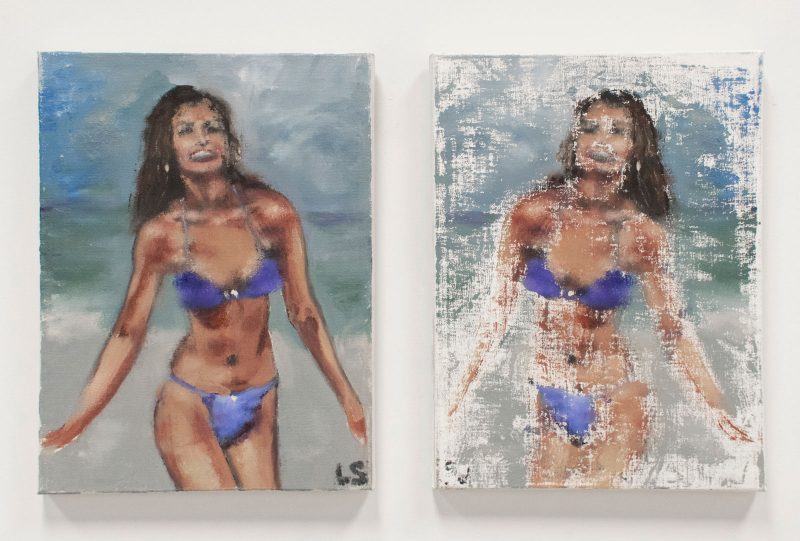
Erasure and visibility
In a physical sense, the three part “Bikini Girls” series obscures through reproduction. The likenesses of three exuberant, bikini clad, Sports Illustrated-ready models have been brightly painted, and then muddied and plastered by using the wet painting to make a monoprint. Displayed side by side, neither the before or after image have survived the process intact. The murky, patchy paint reads almost like a washed-out fresco peeling from a wall. A few feet away, a larger-than life painting called “The First Female Chimney Sweep” similarly muddles the image of a gleefully smiling woman. Viewing her from below, we see a towering femme figure resting against a brick chimney in front of a serenely blue sky. She is dirty and smudged with soot, accentuated by the use of a paint roller leaving behind a smooth, hazy aura.
Through these methods, Soskolne sacrifices her own individual mark making to serve a conceptual purpose. As pointed out during my visit there by Alaina Claire Feldman, Mishkin Gallery’s curator and friend to the artist, removing emphasis from the self in favor of the cause or ideology is likely informed by her career as a labor organizer and advocate. Eloquently put in Feldman’s text accompanying the show, “the more invisible she tried to make herself, the more her labor is reinforced by rendering it visible.”
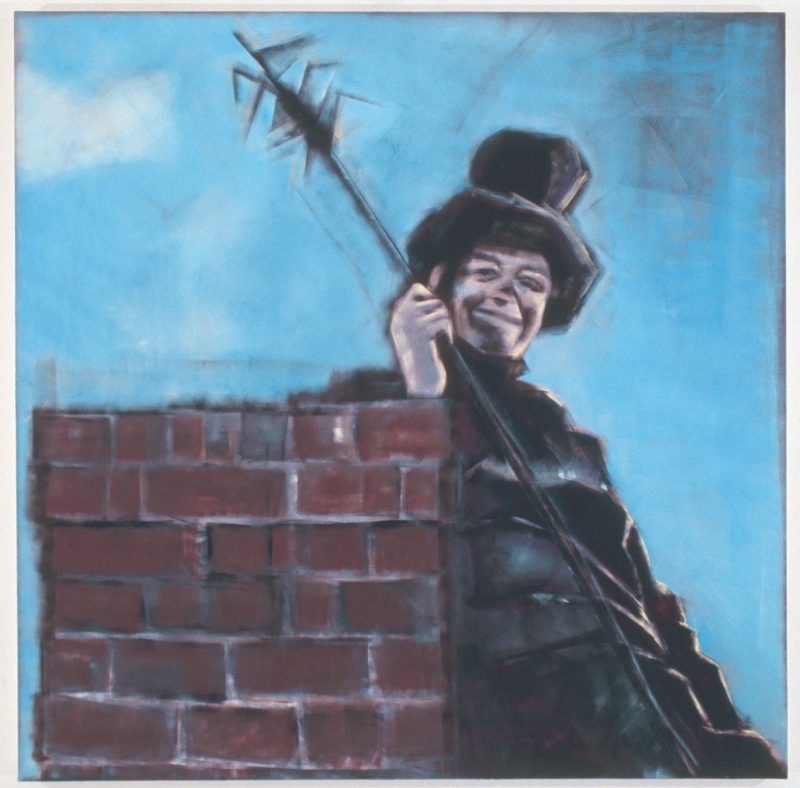
Capitalist Critiques
“The Work,” the show’s eponymous cerulean piece, presents a capitalist critique in the form of a nascent chick. Comfortable but ignorant and unseeing inside the egg, the chick is horrified having just emerged into the outside world and discovering it is chained to a cannonball. Still confined, the chick realizes it has been born into a puritanical place where its worth is tied to productivity. The paint application and subject matter of this piece differs greatly from the “Bikini Girls” and “The First Female Chimney Sweep,” but it also carries thematic undercurrents of reproduction; reproduction in the physical sense of replication, but also in the sense of breeding.
Who is an artist?
The premise of the show begs the question- at one point does an aspiring artist become a “real” artist? By making work? By showing it? Being paid for it? The art on display in The Work embodies a two decade long art practice that was conducted mostly in private and sustained without monetary motivation or major external validation by someone who was already a public figure in the art world independent of their own artwork.
As a young, uncertain painter with strong ideological values and an aversion to a high profile, entrepreneurial lifestyle, I was taken aback by how much of the artist’s statement resonated with my own feelings about my art practice. I’m reminded of the old question, “If a tree falls in a forest…” if you make art, devote your life in the service of art, but choose not to show your art because you don’t adhere to elitist, racist, and misogynistic career expectations in a field masquerading as a meritocracy, you are certainly an artist, but, like the tree, your art and hard work goes unnoticed without a public forum. Soskolne has chosen to make her work conspicuous here, showing the greater world her art which is so closely aligned with her professional philosophy and accomplishments. Her highly conceptual pieces, with their aggressive obliterations and dark subject matter can be seen as a critique of the art world and should be received in that spirit, given by this previously hidden artist now made visible.
“The Work” is on view at Baruch College’s Sidney Mishkin Gallery: 135 E 22nd St, New York, NY 10010. Chapter 1 is on view until June 21st. Chapter 2, a selection of more recent abstracted and stylistically connected paintings is set to open June 24th and ends July 12th.
More Photos
